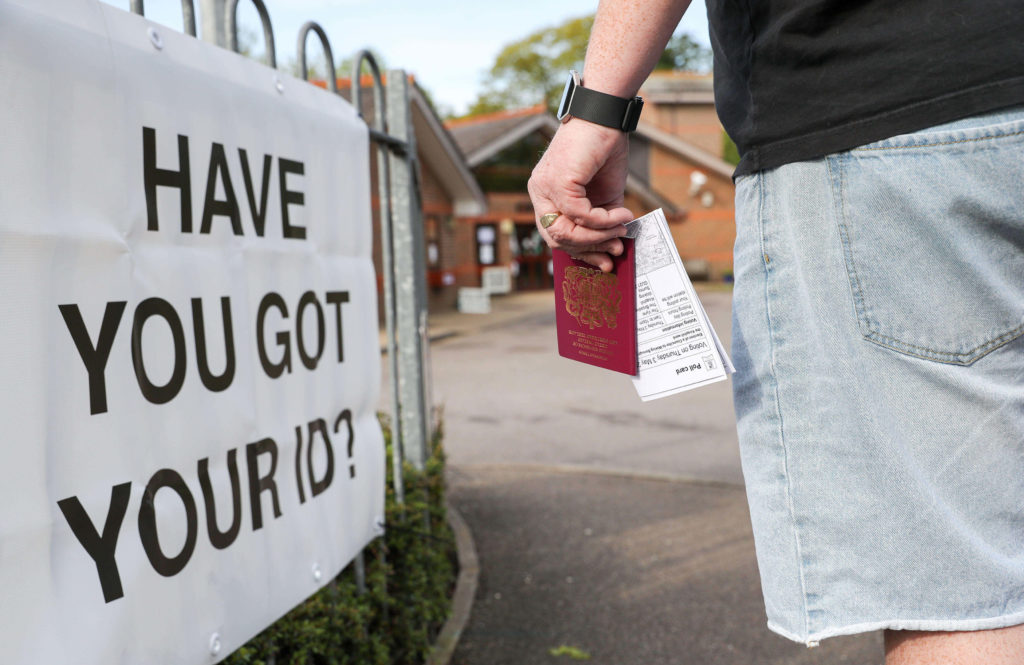For the first time on 4 May, people in England will join those in Canada, Italy, Norway, Israel, Hungary and Northern Ireland in being required to show photo ID before being allowed to vote.
The “no photo ID, no vote” policy was in the last Conservative manifesto and ministers have insisted that the rule change is necessary to prevent voter fraud — despite the low number of such cases.
Last year, there was just one incident of in-person voter fraud which initiated court proceedings across all UK elections, according to the Electoral Commission. And there have been only three convictions of voter impersonation in the past seven years.
Critics argue that the changes are designed to disenfranchise certain types of voters who are disproportionally anti-Conservative and thought to be less likely to have access to photo ID.


In a joint letter to the cabinet office in 2019, representatives of all the major opposition parties described the implementation of voter ID requirements as “a blatant attempt by the Conservatives to rig the result of future elections” by making it harder for typically anti-Conservative voters to participate.
The letter read: “The Windrush scandal has demonstrated very clearly that it can be more difficult for some communities to provide official documentation than others. As representatives of major opposition parties, we believe that what is really going on here is a blatant attempt by the Conservatives to rig the result of future elections by making it harder for people to vote – it’s voter suppression”.
This view was repeatedly recently by Labour MP and shadow safeguarding minister Jess Phillips, who accused the government of introducing compulsory voter ID to try and stop “large portions of the migrant community” from voting at May’s local elections.
However, Phillips conditioned her criticism, telling Matt Forde’s “The Political Party” podcast “the Tories have shot themselves in the foot a little bit”.
Phillips explained: “I represent a community, a large Muslim community, British Pakistani, British Bangladeshi, and there isn’t one of them that doesn’t have photo ID. They do have it. Do you know who doesn’t go in and out of the country? Farmers from Lincolnshire”.
Phillips is not the only serving politician to suggest that the voter ID rollout might, in actuality, disproportionally impact Conservative-voting demographics.
Also raising the alarm about the impact of forcing some voters to produce ID in England at May’s local elections has been former cabinet minister David Davis.
Speaking last week, Davis urged the government to pause to rollout or risk disenfranchising the elderly among other groups.
Pointing to the low uptake of free IDs, he said: “The system they put in place to deal with the problem of those with no ID has not worked. I would at the very least just delay it and say, ‘look we will do this in due course when we’ve got enough of the people in that vulnerable group covered’”.
“This is an answer to a problem that’s not there. Are we actually going to discriminate against the old and the poor in our election system?”, Davis continued.
The government’s own official “impact assessment” last October quoted cabinet office data which found that those aged 50-69 were slightly less likely to hold photographic identification (3% did not hold the accepted forms of identification, compared to 2% overall), while those from the youngest age group (18-29) were slightly more likely to own photographic identification (1% did not hold the accepted forms of identification).
It also found that “older populations (those aged 50-69 and 70+) were more likely than people overall to report that the introduction of identification at polling stations will make it quite difficult or very difficult to vote”.
What may make it even more difficult for older people without the right type of ID is that the application process for free IDs is mainly online. And while it is possible to apply for free ID by post, the application form to do so is online and must be downloaded and then printed off.
However, some have argued that many of the accepted forms of ID suggest more consideration has been given to ensuring older voters can vote in May. For example, an Older Person’s Bus Pass will be accepted, but an equivalent travel card for a younger person will not be. A 60+ Oyster card will also be considered valid ID at a polling station whereas an 18+ Oyster card will not.

